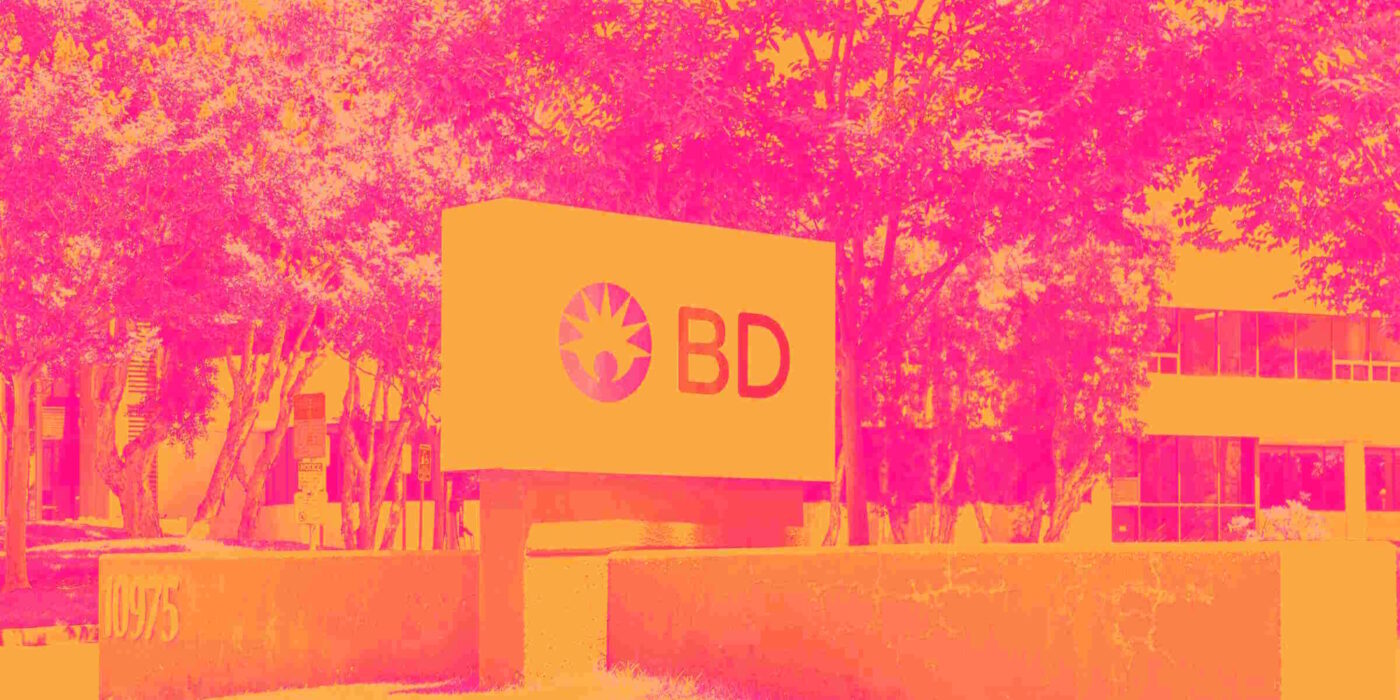
Medical technology company Becton, Dickinson and Company (NYSE:BDX) missed Wall Street’s revenue expectations in Q1 CY2025 as sales rose 4.5% year on year to $5.27 billion. On the other hand, the company’s outlook for the full year was close to analysts’ estimates with revenue guided to $21.85 billion at the midpoint. Its non-GAAP profit of $3.35 per share was 2.1% above analysts’ consensus estimates.
Is now the time to buy BD? Find out by accessing our full research report, it’s free.
BD (BDX) Q1 CY2025 Highlights:
- Revenue: $5.27 billion vs analyst estimates of $5.35 billion (4.5% year-on-year growth, 1.5% miss)
- Adjusted EPS: $3.35 vs analyst estimates of $3.28 (2.1% beat)
- Adjusted EBITDA: $1.06 billion vs analyst estimates of $1.54 billion (20.2% margin, 31% miss)
- Adjusted EPS guidance for the full year is $14.20 at the midpoint, missing analyst estimates by 1.2%
- Operating Margin: 10.4%, down from 14.5% in the same quarter last year
- Free Cash Flow Margin: 0.7%, down from 7.6% in the same quarter last year
- Constant Currency Revenue rose 6% year on year (4.7% in the same quarter last year)
- Market Capitalization: $59.46 billion
"Amid a difficult operating environment impacting near-term organic revenue growth, our Q2 results reflect the strength of our business model and ability to exceed our earnings expectations through quality gross margin improvement," said Tom Polen, chairman, CEO and president of BD.
Company Overview
With a history dating back to 1897 and a presence in virtually every hospital around the globe, Becton Dickinson (NYSE:BDX) develops and manufactures medical supplies, devices, laboratory equipment and diagnostic products used by healthcare institutions and professionals worldwide.
Sales Growth
A company’s long-term performance is an indicator of its overall quality. Any business can have short-term success, but a top-tier one grows for years. Over the last five years, BD grew its sales at a tepid 3.8% compounded annual growth rate. This was below our standard for the healthcare sector and is a tough starting point for our analysis.

Long-term growth is the most important, but within healthcare, a half-decade historical view may miss new innovations or demand cycles. BD’s annualized revenue growth of 5.5% over the last two years is above its five-year trend, but we were still disappointed by the results. 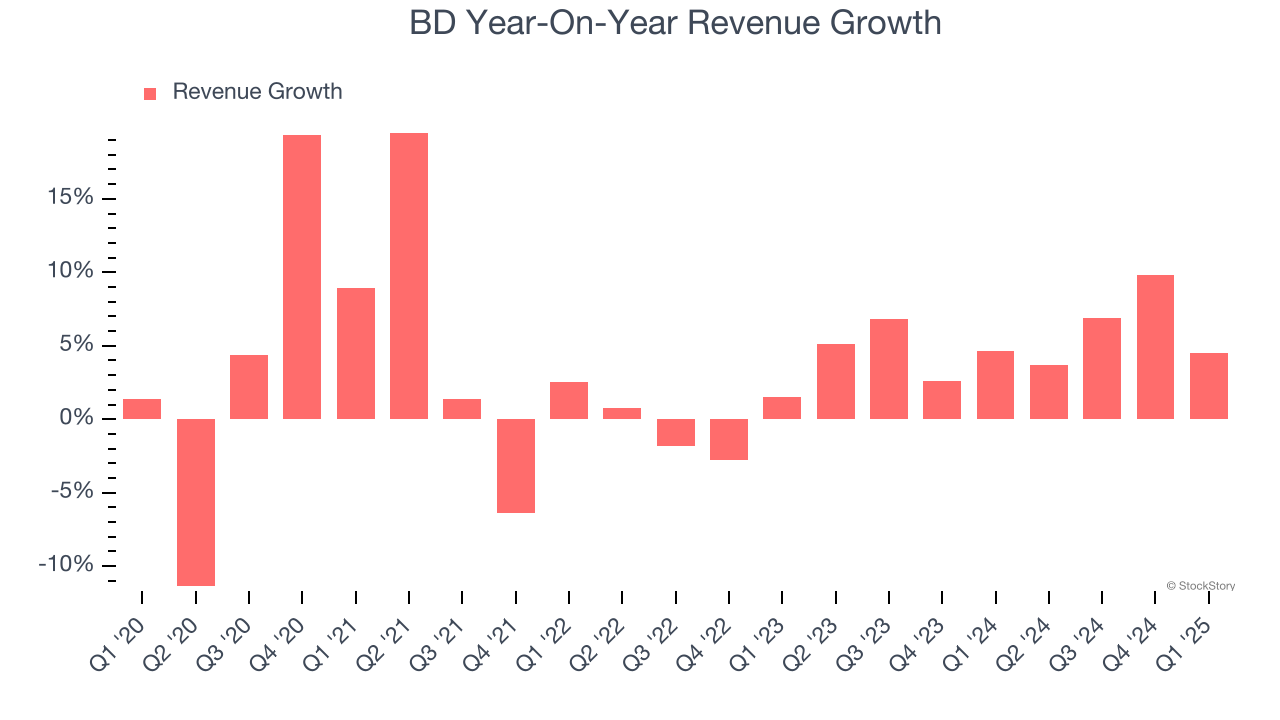
We can better understand the company’s sales dynamics by analyzing its constant currency revenue, which excludes currency movements that are outside their control and not indicative of demand. Over the last two years, its constant currency sales averaged 5.6% year-on-year growth. Because this number aligns with its normal revenue growth, we can see that BD has properly hedged its foreign currency exposure. 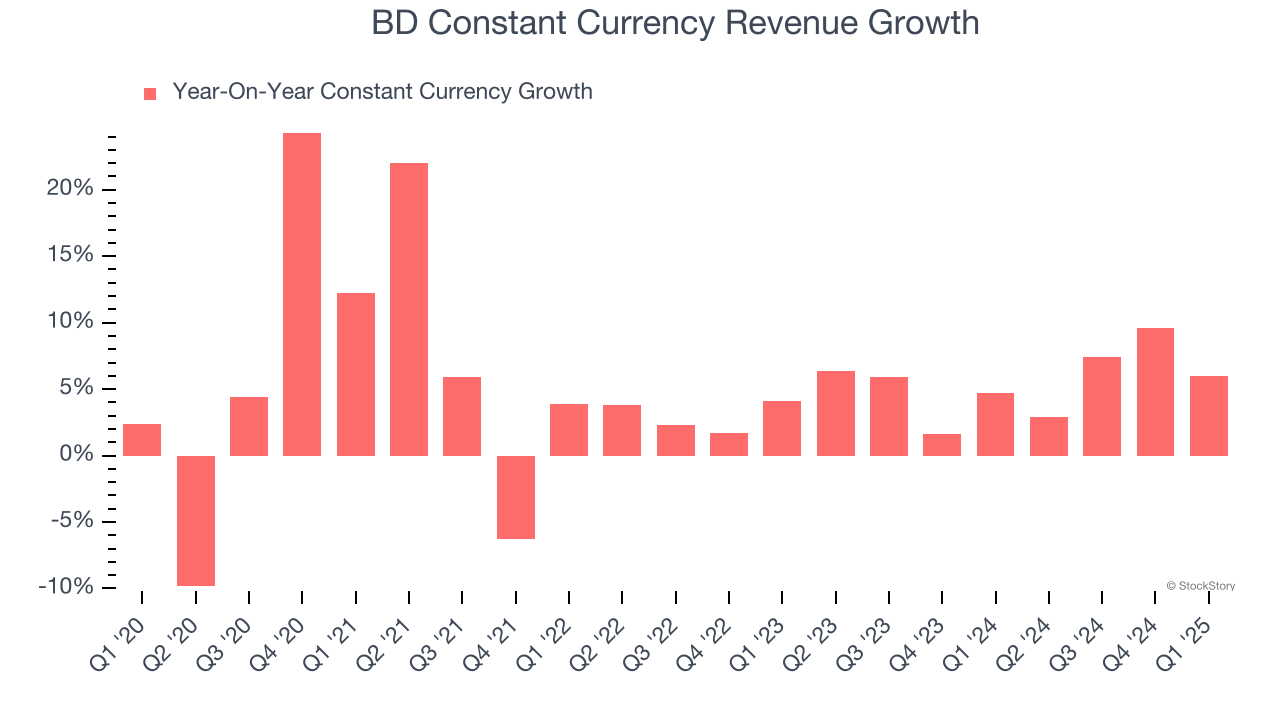
This quarter, BD’s revenue grew by 4.5% year on year to $5.27 billion, falling short of Wall Street’s estimates.
Looking ahead, sell-side analysts expect revenue to grow 6.8% over the next 12 months, similar to its two-year rate. This projection is above average for the sector and implies its newer products and services will catalyze better top-line performance.
Today’s young investors won’t have read the timeless lessons in Gorilla Game: Picking Winners In High Technology because it was written more than 20 years ago when Microsoft and Apple were first establishing their supremacy. But if we apply the same principles, then enterprise software stocks leveraging their own generative AI capabilities may well be the Gorillas of the future. So, in that spirit, we are excited to present our Special Free Report on a profitable, fast-growing enterprise software stock that is already riding the automation wave and looking to catch the generative AI next.
Operating Margin
Operating margin is a key measure of profitability. Think of it as net income - the bottom line - excluding the impact of taxes and interest on debt, which are less connected to business fundamentals.
BD has done a decent job managing its cost base over the last five years. The company has produced an average operating margin of 11.4%, higher than the broader healthcare sector.
Looking at the trend in its profitability, BD’s operating margin decreased by 1.7 percentage points over the last five years. The company’s two-year trajectory also shows it failed to get its profitability back to the peak as its margin fell by 1.2 percentage points. This performance was poor no matter how you look at it - it shows its expenses were rising and it couldn’t pass those costs onto its customers.
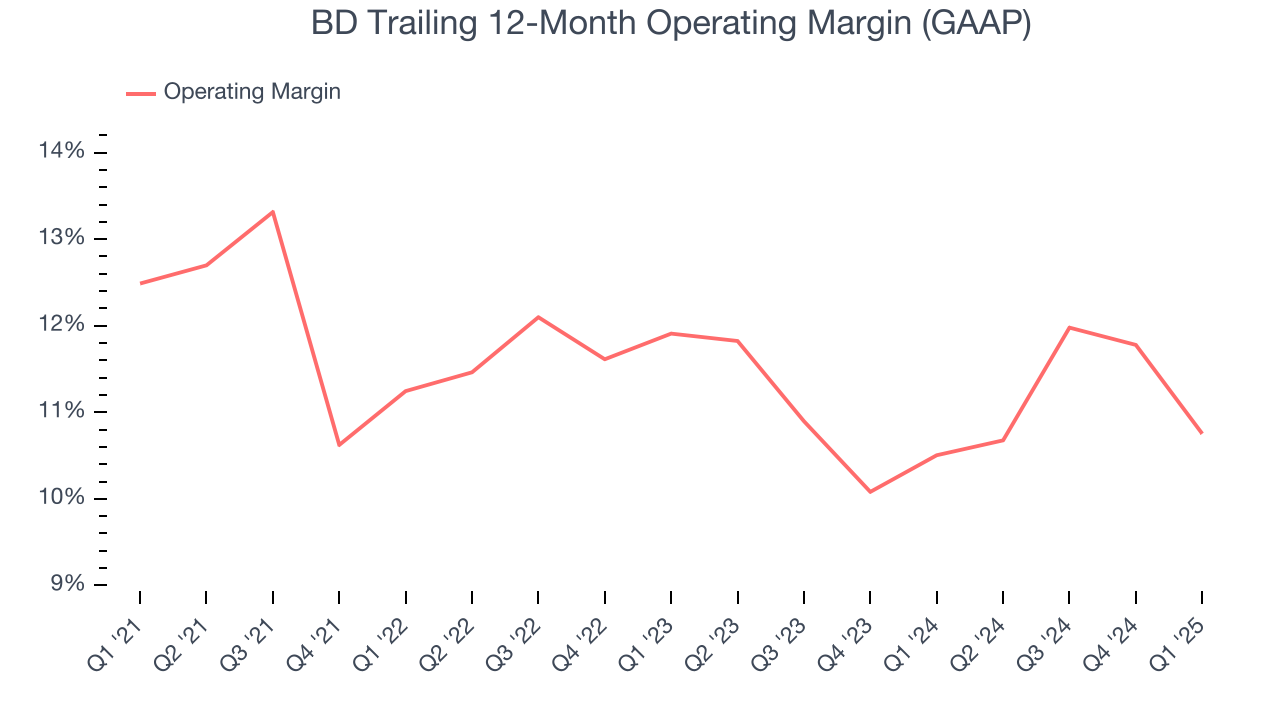
This quarter, BD generated an operating profit margin of 10.4%, down 4.2 percentage points year on year. This contraction shows it was less efficient because its expenses grew faster than its revenue.
Earnings Per Share
Revenue trends explain a company’s historical growth, but the long-term change in earnings per share (EPS) points to the profitability of that growth – for example, a company could inflate its sales through excessive spending on advertising and promotions.
BD’s unimpressive 4% annual EPS growth over the last five years aligns with its revenue performance. This tells us it maintained its per-share profitability as it expanded.
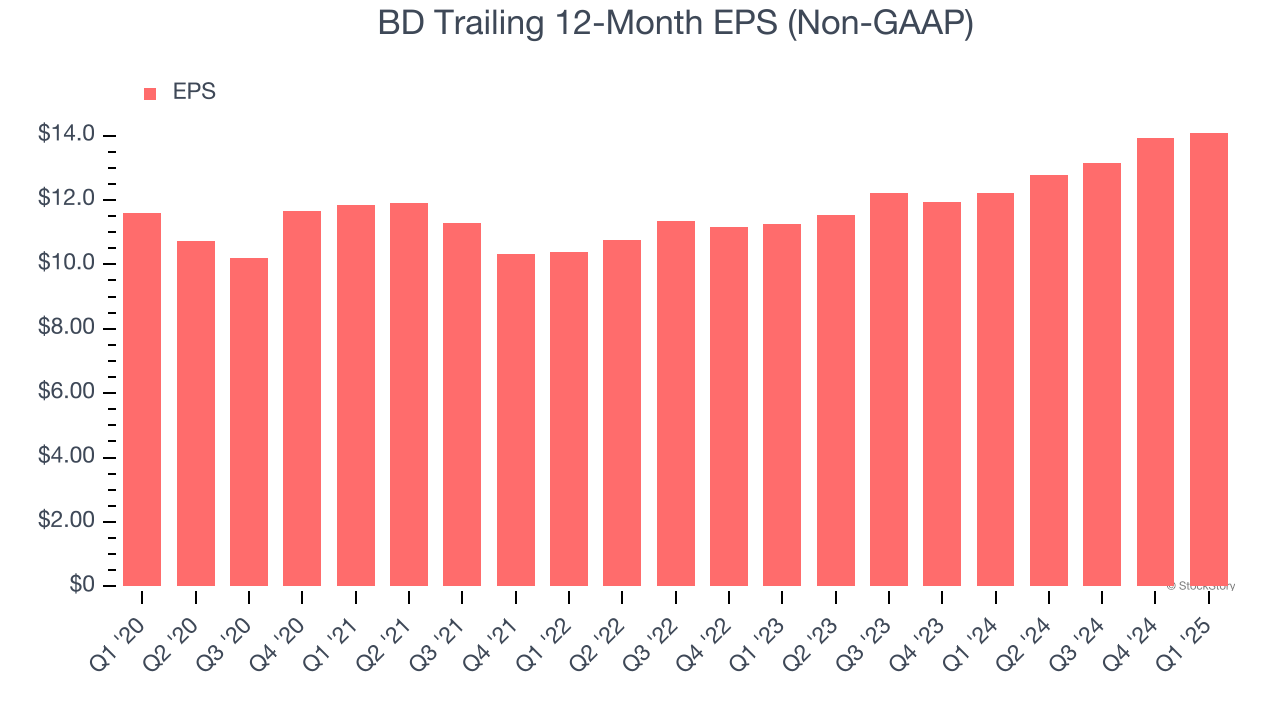
In Q1, BD reported EPS at $3.35, up from $3.17 in the same quarter last year. This print beat analysts’ estimates by 2.1%. Over the next 12 months, Wall Street expects BD’s full-year EPS of $14.09 to grow 6.2%.
Key Takeaways from BD’s Q1 Results
We struggled to find many positives in these results. Its revenue missed and its constant currency revenue fell short of Wall Street’s estimates. Overall, this was a softer quarter. The stock traded down 2.8% to $201.09 immediately following the results.
BD underperformed this quarter, but does that create an opportunity to invest right now? We think that the latest quarter is only one piece of the longer-term business quality puzzle. Quality, when combined with valuation, can help determine if the stock is a buy. We cover that in our actionable full research report which you can read here, it’s free.
